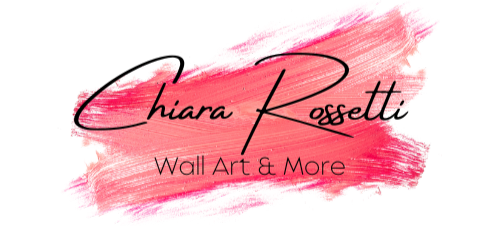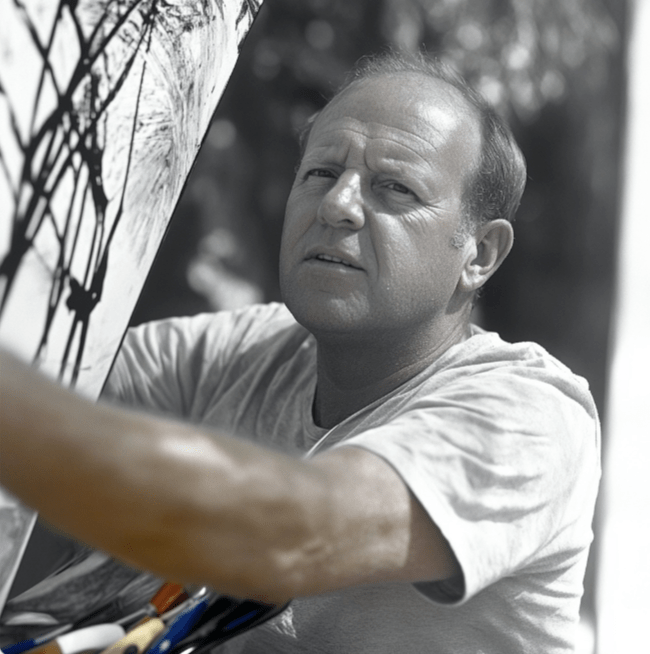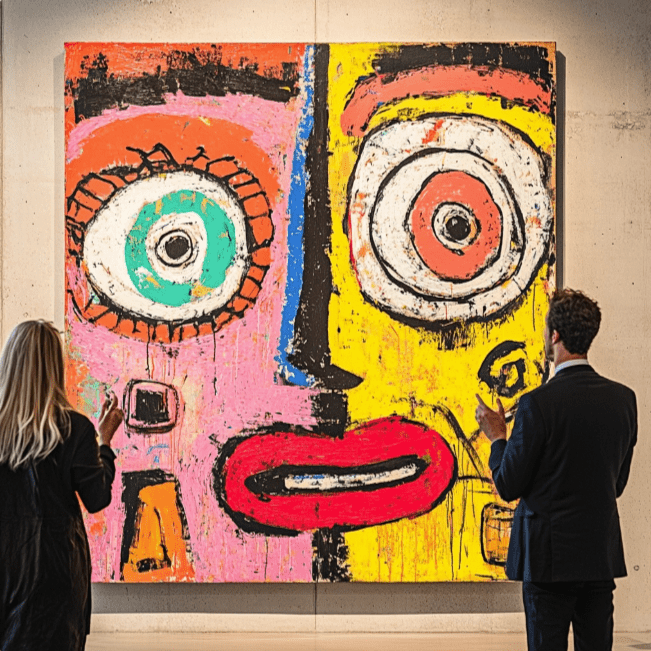Jackson Pollock and Abstract Expressionism: A Revolution in Modern Art
Jackson Pollock is a name synonymous with the revolutionary art movement known as Abstract Expressionism. His innovative techniques and fearless approach to painting have left an indelible mark on modern art, challenging traditional perceptions and paving the way for contemporary artists. Pollock's turbulent life and explosive creativity culminated in a body of work that continues to inspire and provoke thought, making him one of the most significant figures in the history of American art.
Who Was Jackson Pollock and What Is Abstract Expressionism?
What Influenced Jackson Pollock's Painting Style?
Jackson Pollock was born in Cody, Wyoming, in 1912, and his journey into the art world began at the Art Students League under the tutelage of Thomas Hart Benton. Benton's focus on rhythmic forms and dynamic movement undoubtedly influenced Pollock's later development. However, Pollock's unique style was also shaped by his exposure to Native American art, surrealist ideas, and the works of Pablo Picasso. These diverse influences helped Pollock to found a new abstract language that expressed the unconscious, a hallmark of abstract expressionism. Pollock's work was characterized by its emotional intensity and the freedom of form, and it represented a break from the more traditional approaches to painting that dominated the art world at the time.
How Did Abstract Expressionism Emerge?
The emergence of Abstract Expressionism in the 1940s marked a significant shift in the landscape of modern art. This movement sought to convey emotion and spontaneity, often through non-representational forms. Abstract Expressionists, including Pollock, were deeply influenced by the existentialist philosophy that emphasized the absurdity of human existence and the necessity of individual freedom. It was a period of experimentation, and artists like Willem de Kooning and Mark Rothko were also instrumental in its development. Pollock, with his innovative drip painting technique, became a prominent figure within this movement, challenging the conventions of art and inspiring future generations of artists to explore new possibilities.
What Makes Pollock's Work Stand Out in Abstract Art?
Jackson Pollock's work is distinguished by his pioneering use of the drip technique, which involved pouring or dripping paint onto a horizontal canvas laid out on the floor. This method, part of what came to be known as "action painting," allowed Pollock to immerse himself physically in the creation of his art, resulting in dynamic compositions that captured movement and emotion. Unlike traditional painting, where the artist stands before an easel, Pollock's approach was liberated from constraints, enabling him to explore the canvas from all angles. His paintings were not mere representations but rather manifestations of energy, making them compelling examples of abstract art. The expressive force and originality of Pollock's work positioned him as the "greatest living painter in the United States" during his lifetime.
How Did Jackson Pollock Develop His Drip Painting Technique?
What Is the Significance of Drip Painting in Abstract Art?
The drip painting technique developed by Jackson Pollock revolutionized abstract art. It introduced a method that was both innovative and deeply personal, allowing the artist to engage with the canvas in an unprecedented way. Pollock's technique involved the use of industrial paints rather than traditional artist's paints, and he often used sticks, trowels, or knives to manipulate the paint. This approach emphasized the process of painting itself, where the act of creation was as significant as the final product. The significance of drip painting lies in its ability to convey raw emotion and spontaneity, pushing the boundaries of what abstract art could express and inspiring a new wave of artists to explore the potential of nontraditional techniques.

How Did Pollock's Method Differ from Traditional Painting?
Pollock's method was a radical departure from traditional painting, which typically involved careful planning and controlled brushwork. By contrast, Pollock's drip technique was inherently chaotic and spontaneous, reflecting the artist's internal state and his desire to access the unconscious mind. Unlike the measured strokes of a brush on an easel, Pollock's method allowed for an uninhibited engagement with the canvas, where gravity and chance played a role in the final composition. This approach not only challenged the conventions of painting but also redefined the artist's relationship with their medium, emphasizing the physicality and immediacy of the creative process.
What Role Did the Canvas Play in Pollock's Technique?
The canvas in Jackson Pollock's technique became more than just a surface for painting; it was an integral part of the creative process. By placing the canvas on the floor, Pollock could approach it from all sides, allowing for a 360-degree interaction that was both intimate and expansive. This choice transformed the canvas into a stage for action painting, where Pollock's movements and gestures were as much a part of the artwork as the paint itself. The canvas was no longer a passive recipient but an active participant in the creation of art, reflecting the dynamism and energy of Pollock's methodology.
What Are the Most Iconic Paintings of Jackson Pollock?
Which Works Are Considered Defining Pieces of Abstract Expressionism?
Jackson Pollock's oeuvre includes several defining pieces of Abstract Expressionism, with works like "No. 5, 1948," "Autumn Rhythm," and "Convergence" standing out as iconic examples. These paintings showcase Pollock's mastery of the drip technique, with complex layers of swirling lines and vibrant colors that evoke a sense of motion and emotion. These works have been celebrated for their groundbreaking approach to form and composition, challenging viewers to engage with art on a visceral level. Pollock's paintings are seen as quintessential representations of Abstract Expressionism, capturing the movement's emphasis on spontaneity, emotion, and the exploration of the subconscious.
How Did Pollock's Paintings Challenge the Concept of the Easel?
Jackson Pollock's approach to painting fundamentally challenged the traditional concept of the easel. By laying his canvas on the floor, Pollock broke away from the constraints of vertical composition and introduced a new dimension to painting. This horizontal orientation allowed for a more physical and energetic engagement with the medium, as Pollock could move freely around the canvas, applying paint from above. This method not only liberated the artist from conventional techniques but also invited viewers to reconsider the role of the easel in the creation of art. Pollock's work demonstrated that painting could be an immersive and dynamic experience, paving the way for new interpretations of artistic expression.
What Is the Legacy of Pollock's Most Famous Paintings?
The legacy of Jackson Pollock's most famous paintings is profound and far-reaching. His innovative techniques and bold approach to art have left an indelible mark on the history of modern art, influencing countless artists and shaping the course of contemporary art movements. Pollock's work challenged traditional notions of beauty and representation, encouraging artists to explore new possibilities and break free from convention. His paintings continue to be celebrated in major art institutions, such as the Museum of Modern Art (MoMA), and remain a source of inspiration and debate in the art world. Pollock's legacy is a testament to the transformative power of art and its ability to push boundaries and provoke thought.

What Impact Did Jackson Pollock Have on Modern Art and Other Artists?
How Did Pollock Influence Other Abstract Expressionists Like De Kooning?
Jackson Pollock's influence on other Abstract Expressionists, such as Willem de Kooning, was significant. Pollock's innovative techniques and fearless approach to painting inspired his contemporaries to experiment with new forms and methods. De Kooning, known for his dynamic brushwork and expressive compositions, drew inspiration from Pollock's emphasis on spontaneity and emotion. The two artists shared a commitment to exploring the unconscious and breaking free from traditional artistic constraints, contributing to the development of a distinct American art movement that would resonate globally. Pollock's impact on his peers underscores his role as a pioneering figure in the evolution of modern art.
What Was the Role of Critics Like Clement Greenberg in Pollock's Career?
Clement Greenberg, a prominent art critic, played a crucial role in the career of Jackson Pollock. Greenberg was an early champion of Pollock's work, recognizing its revolutionary potential and advocating for its significance within the art world. His writings helped to elevate Pollock's status as a leading figure in Abstract Expressionism, bringing attention to the radical nature of his painting techniques. Greenberg's support and analysis provided a critical framework for understanding Pollock's contributions to modern art, helping to secure his place in the canon of art history. The relationship between Pollock and Greenberg highlights the importance of critical discourse in shaping the reception and legacy of artistic innovation.
How Did Pollock's Relationship with Lee Krasner Affect His Artistic Output?
Jackson Pollock's relationship with fellow artist Lee Krasner had a profound impact on his artistic output. Krasner, an accomplished abstract expressionist in her own right, provided both personal and professional support to Pollock. Her influence was instrumental in refining his techniques and encouraging his exploration of new artistic avenues. Krasner's dedication to Pollock's career, along with her understanding of his creative process, helped to stabilize Pollock during periods of personal turmoil. The collaboration between Pollock and Krasner exemplifies the dynamic interplay of partnership and creativity, illustrating how personal relationships can deeply affect an artist's work and legacy.
How Did Jackson Pollock's Art Gain Recognition in the United States and Beyond?

What Was the Role of Peggy Guggenheim in Promoting Pollock's Work?
Peggy Guggenheim, a renowned art collector and patron, played a pivotal role in promoting Jackson Pollock's work. Guggenheim recognized Pollock's potential early on and provided him with financial support and exhibition opportunities. Her gallery, Art of This Century, was instrumental in introducing Pollock to a wider audience, showcasing his work alongside other avant-garde artists. Guggenheim's endorsement helped to legitimize Pollock's innovative approach to painting, attracting the attention of critics, collectors, and the public. Her support was crucial in establishing Pollock's reputation as a leading figure in Abstract Expressionism and securing his place in the pantheon of modern art.
How Did Media Coverage, Such as Life Magazine, Affect Pollock's Fame?
Media coverage, particularly an article in Life Magazine, played a significant role in Jackson Pollock's rise to fame. In 1949, the magazine published a feature on Pollock, asking the provocative question, "Is he the greatest living painter in the United States?" This exposure catapulted Pollock into the national spotlight, bringing his work to the attention of a broader audience. The article highlighted Pollock's revolutionary techniques and positioned him as a central figure in the American art scene. This media attention not only increased Pollock's visibility but also sparked debates about the nature of modern art, contributing to his enduring legacy as a transformative artist.
What Is the Contemporary View of Pollock's Contributions to American Art?
Today, Jackson Pollock's contributions to American art are recognized as groundbreaking and transformative. His innovative techniques and fearless exploration of form and emotion have left a lasting impact on the art world, influencing generations of artists and shaping the course of contemporary art. Pollock's work is celebrated for its ability to challenge traditional notions of representation and engage viewers on a visceral level. His legacy is evident in the continued interest in abstract expressionism and the enduring fascination with his life and work. Pollock's contributions to American art are seen as a testament to the power of creativity and the limitless possibilities of artistic expression.
Enhance Your Space with Unique Modern Masterpieces
Are you inspired by the innovative mediums and conceptual depth highlighted in our exploration of contemporary art? You’re not alone! Today’s art enthusiasts are seeking cultural relevance and emotional connections in their artwork. However, finding pieces that resonate with modern themes and fit your unique style can be a challenge. That’s where we come in!
At Rossetti Art, we specialize in canvas prints, original paintings, and modern sculptures that celebrate the spirit of now. Each piece created by Chiara Rossetti brings a personal touch that connects deeply with current social narratives—just like the modern masterpieces discussed in the article. Don’t miss out on the chance to elevate your home decor with breathtaking artwork that speaks to your values and aesthetic. Explore our collection today and find your perfect piece! Act now, and transform your space into a gallery of inspiration!
FAQ
Q: Who was Jackson Pollock and what is he known for?
A: Paul Jackson Pollock was an American painter renowned for his contributions to the abstract expressionist movement. He is best known for his unique style of drip painting, which is often referred to as "action painting."
Q: What is the significance of Pollock's "action painting" technique?
A: "Action painting" is significant because it emphasizes the physical act of painting as an essential aspect of the finished work. This technique allowed Pollock to express abstract language for the unconscious, capturing movement and emotion on his canvases.
Q: How did Jackson Pollock's early life influence his art career?
A: Pollock lived in various places during his early life, which exposed him to different cultural influences. His studies with Thomas Hart Benton at the Art Students League in New York in 1930 helped him develop his unique style.
Q: What role did the Federal Art Project play in Pollock's career?
A: The Federal Art Project provided Pollock with financial support and opportunities to develop his skills during the Great Depression. It was a crucial period for his growth as an artist, allowing him to explore radical abstract styles.
Q: How did Pollock's work evolve over time?
A: Over time, Pollock began experimenting with large abstract canvases, moving away from traditional drawing and painting to more avant-garde techniques. His work became increasingly abstract, culminating in his famous drip paintings.
Q: What was the impact of the Art of This Century Gallery on Pollock's career?
A: The Art of This Century Gallery played a pivotal role in Pollock's career by providing him a platform to showcase his work. It introduced him to influential figures in the art world, such as Peggy Guggenheim, who supported and promoted his art.
Q: How did Pollock's relationship with other artists, like Joan Miró, influence his work?
A: Joan Miró's work inspired Pollock to explore surrealism and abstract expressionism. This influence helped Pollock develop his own unique style, characterized by bold, abstract forms and a focus on the unconscious mind.
Q: Why is Pollock considered a leading figure in the abstract expressionist movement?
A: Although Pollock never adhered strictly to one style, his innovative techniques and expressive power made him a leading figure in the abstract expressionist movement. His work challenged traditional notions of painting and opened new possibilities for performance art.
Q: What was the significance of Pollock's exhibitions at the Betty Parsons Gallery?
A: Exhibitions at the Betty Parsons Gallery were significant for Pollock as they helped solidify his reputation as a groundbreaking artist. These exhibitions brought his work to a broader audience and affirmed his place within the abstract expressionist painters.
Q: How has Pollock's legacy continued to influence contemporary art?
A: Pollock's legacy continues to influence contemporary art through his radical abstract styles and the way he redefined the art-making process. His emphasis on the act of painting itself has inspired generations of artists to explore new forms of expression.





Leave a comment
This site is protected by hCaptcha and the hCaptcha Privacy Policy and Terms of Service apply.